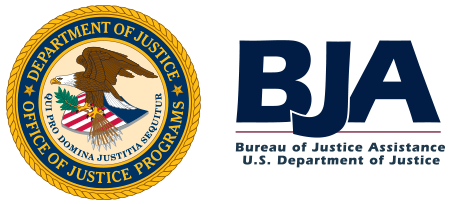Mississippi Justice Reinvestment Initiative

In 2013, Mississippi had the second highest incarceration rate in the country, with a prison population projected to cost the state $266 million over the next ten years.1 Seeking to maximize state resources while prioritizing public safety, Mississippi engaged in the Justice Reinvestment Initiative (JRI) to better understand the factors driving prison population growth and develop data-driven solutions that address state specific challenges.
With assistance from the Crime and Justice Institute, Mississippi’s engagement in JRI resulted in the passage of comprehensive reform legislation—House Bill 585—signed into law on March 31, 2014.2 HB 585 was the result of a yearlong data-driven policy development effort led by the Mississippi Corrections and Criminal Justice Task Force (Task Force). Supported by The Pew Charitable Trusts and the Bureau of Justice Assistance, a component of the Department of Justice’s Office of Justice Programs, the Task Force examined drivers of the state’s increasing prison population and issued a set of policy recommendations intended to achieve the following goals:3
Mississippi’s JRI goals:
1. Ensure certainty and clarity in sentencing.
2. Increase access to proven prison alternatives, including specialty courts.
3. Focus prison space on people convicted of multiple and/or violent offenses.
4. Strengthen supervision and intervention.
5. Ensure the quality and sustainability of reforms.
This brief explores Mississippi’s progress in achieving the Task Force goals, which inspired HB 585.
To date, Mississippi has achieved the following:
- Reduced its prison population.
- Reserved a higher proportion of prison space for people convicted of violent offenses.
- Strengthened the use of evidence-based practices in community supervision.
- Monitored and evaluated HB 585 through the Corrections and Criminal Justice Oversight Task Force.
1. Ensure certainty and clarity in sentencing.
Prior to HB 585, Mississippi law mandated that all individuals convicted of felony offenses serve 85 percent of their sentence before they are eligible for parole. Consequently, the prison population in Mississippi rose from 12,292 in FY 1995 to 31,031 in FY 2005, an increase of 152.5 percent.4
Additionally, prior to HB 585, Mississippi’s parole grant rate varied widely. The Parole Board reported that denials were largely due to individuals who were eligible for parole not having completed the treatment or programming necessary for a successful reentry.5

2. Increase access to proven prison alternatives, including specialty courts.
The Task Force found that Mississippi had a lack of alternatives to incarceration. In response, HB 585 expanded eligibility for several alternatives including specialty courts and probation that provide more constructive pathways for addressing people’s needs and reducing the state’s reliance on incarceration.
Specialty Courts:
are problem-solving courts designed to address the root causes of criminal activity. Examples of specialty courts include intervention courts (known as drug courts in Mississippi until 2020) and veterans’ courts.

3. Focus prison space on people convicted of multiple and/or violent offenses.
Between 1983 and 2013, the prison population in Mississippi grew by 300 percent.11 The Task Force found that individuals convicted of nonviolent crimes played a substantial role in Mississippi’s rising prison population: people convicted of nonviolent offenses were responsible for over two-thirds of the surge in prison admissions from 2002 to 2012 and comprised nearly half of the state’s prison population in 2012.12

4. Strengthen supervision and intervention.
The Task Force examined community supervision policies and practices. The Task Force found that Mississippi law did not provide community supervision field officers with evidence-based tools, such as graduated sanctions and incentives, to respond to technical violations. The Task Force found an 84 percent increase in the number of individuals incarcerated because of parole or probation violations between 2002 and 2012.18,19
Graduated Sanctions and Incentives:
are incremental responses designed to encourage positive behavior change (incentives) or ensure accountability for non-compliant behavior (sanctions).


5. Ensure the quality and sustainability of reforms.
The Task Force recognized the importance of safeguarding the quality and sustainability of the policy changes included in HB 585. As such, the Task Force recommended the establishment of an Oversight Task Force that would be charged with tracking the implementation of HB 585, reviewing data metrics, and recommending further policy changes needed to meet the original goals of the JRI Task Force.

Additional Accomplishments and Information Related to Reforms
- The Mississippi legislature subsequently passed two criminal justice bills, including:
- HB 387 (2018) abolished the practice of incarcerating individuals for not paying fines, clarified that individuals with certain sentence enhancements could be considered for parole, and granted judges the authority to deviate from the mandatory minimum sentences for individuals with repeated nonviolent offenses.25
- SB 2795 (2021) which extended parole eligibility to more offenses. As a result, approximately 6,300 incarcerated individuals either became eligible for parole or had their parole eligibility date scheduled to an earlier time.26
- In September 2022, the Mississippi State Parole Board made modifications to its hearing schedule, allowing it to schedule parole hearings more quickly. Prior to the modifications, only 9.8 percent of parole hearings were conducted on time, meaning some people were incarcerated past their parole release date. After the changes were implemented, this number increased to 70.5 percent from October to December 2022.27
- Currently, Mississippi leads the nation with the highest number of individuals incarcerated per 100,000 residents in the state.28 Among other things, while Mississippi made great strides to streamline parole releases following the passage of HB 585, parole grant rates have significantly declined in recent years.29 Mississippi leaders are continuing to discuss opportunities to address parole release delays as well as weighing additional justice system reforms.
Endnotes
- Mississippi Corrections and Criminal Justice Task Force, Final Report (Jackson, MS: 2013): 3, https://www.mdoc.ms.gov/sites/default/files/2023-01/Dec%202013%20Final%20Report_Task%20Force.pdf.
- Mississippi Corrections and Criminal Justice Task Force, Practitioner Guide to HB 585. https://www.coxwelllaw.com/documents/ms_practioner_guide.pdf.
- Mississippi Corrections and Criminal Justice Task Force, Final Report (Jackson, MS: 2013): 3, https://www.mdoc.ms.gov/sites/default/files/2023-01/Dec%202013%20Final%20Report_Task%20Force.pdf.
- Joint Legislative Committee on Performance Evaluation and Expenditure Review (PEER Mississippi), A Review of the Mississippi State Parole Board (Jackson, MS: 2021): 6, https://da.mdah.ms.gov/series/legislature/peer-su/detail/823044.
- Mississippi Corrections and Criminal Justice Task Force, Final Report (Jackson, MS: 2013): 12, https://www.mdoc.ms.gov/sites/default/files/2023-01/Dec%202013%20Final%20Report_Task%20Force.pdf.
- Corrections and Criminal Justice Oversight Task Force, 2019 Final Report (Jackson, MS: 2020): 12, https://www.mdoc.ms.gov/sites/default/files/2023-01/Jan%202020%20Final%20Report_Task%20Force.pdf.
- Joint Legislative Committee on Performance Evaluation and Expenditure Review (PEER Mississippi), A Follow-up Review of the Mississippi State Parole Board (Jackson, MS: 2023): 6, https://www.peer.ms.gov/sites/default/files/peer_publications/rpt688.pdf.
- Mississippi Department of Corrections, FY 2012 Annual Report (Jackson, MS), https://www.mdoc.ms.gov/sites/default/files/2023-01/2012%20MDOC%20Annual%20Report.pdf.
- Mississippi Department of Corrections, FY 2020 Annual Report (Jackson, MS), https://www.mdoc.ms.gov/sites/default/files/2023-01/2020%20Annual%20Report.pdf See Objective 2 tab.
- Supreme Court of Mississippi, 2022 Annual Report (Jackson, MS: 2023): 22, https://courts.ms.gov/research/reports/SCTAnnRep2022.pdf.
- The Pew Charitable Trusts, Mississippi’s 2014 Corrections and Criminal Justice Reform (Washington D.C.: 2014), https://www.pewtrusts.org/~/media/assets/2014/09/pspp_mississippi_2014_corrections_justice_reform.pdf.
- Ibid.
- Ibid.
- Mississippi Department of Corrections, FY 2013 Annual Report (Jackson, MS), https://www.mdoc.ms.gov/sites/default/files/2023-01/2013%20MDOC%20Annual%20Report.pdf.
- Mississippi Department of Corrections, FY 2020 Annual Report (Jackson, MS), 100721_AR FY 2020_FINAL.indd (ms.gov).
- Mississippi Department of Correction, FY 2012 Annual Report (Jackson, MS), 2013 MDOC Annual Report.pdf (ms.gov).
- Mississippi Department of Corrections, FY 2020 Annual Report (Jackson, MS), 100721_AR FY 2020_FINAL.indd (ms.gov).
- Mississippi Corrections and Criminal Justice Task Force, Final Report, Dec 2013 Final Report_Task Force.pdf (ms.gov), 9.
- The Pew Charitable Trusts, Mississippi’s 2014 Corrections and Criminal Justice Reform, 3.
- Ibid.
- Mississippi Department of Corrections, FY 2013 Annual Report.
- Mississippi Department of Corrections, FY 2020 Annual Report.
- Mississippi Department of Corrections, FY 2013 Annual Report.
- Mississippi Department of Corrections, FY 2020 Annual Report.
- Corrections and Criminal Justice Oversight Task Force, 2022 Final Report (Jackson, MS: 2023): 4, https://www.mdoc.ms.gov/sites/default/files/2023-01/Jan%202023%20Final%20Report_Task%20Force.pdf.
- Ibid.
- PEER Mississippi, A Follow-up Review of the Mississippi State Parole Board, 8.
- The Sentencing Project, U.S. Criminal Justice Data, https://www.sentencingproject.org/research/us-criminal-justice-data/.
- FWD.us, High Cost, Low Return: Mississippi’s Ongoing Incarceration Crisis (2022), https://www.fwd.us/news/mississippis-ongoing-incarceration-crisis/.

BJA strengthens the Nation’s criminal justice system and helps America’s state, local, and tribal jurisdictions reduce and prevent crime, reduce recidivism, and promote a fair and safe criminal justice system. BJA focuses its programmatic and policy efforts on providing a wide range of resources, including training and technical assistance, to law enforcement, courts, corrections, treatment, reentry, justice information sharing, and community-based partners to address chronic and emerging criminal justice challenges nationwide. To learn more about BJA, visit https://bja.ojp.gov, or follow us on Facebook (https://www.facebook.com/DOJBJA/) and Twitter (@DOJBJA). BJA is part of the Department of Justice’s Office of Justice Programs.

The Crime and Justice Institute (CJI) has more than a decade of experience as a JRI technical assistance provider, supporting states through assessing strengths and needs, conducting data analysis, facilitating policy development, and assisting with implementation.
Acknowledgments
This brief was prepared by Len Engel, Barbara Pierce, Colby Dawley, Abigail Strait, Dr. Katie Zafft, Clarissa Dias, Andy Tisdel, Nikki Miguel, Ashley Neufeld, and Amanda Coscia.
This project was supported by Grant No. 15PBJA-21- GK-04350-JRIX awarded by the Bureau of Justice Assistance. The Bureau of Justice Assistance is a component of the Department of Justice’s Office of Justice Programs, which also includes the Bureau of Justice Statistics, the National Institute of Justice, the Office of Juvenile Justice and Delinquency Prevention, the Office for Victims of Crime, and the SMART Office. Points of view or opinions in this document are those of the author and do not necessarily represent the official position or policies of the U.S. Department of Justice.
Project Contact:
Barbara Pierce, Director of Justice Initiatives | CJI, comms@cjinstitute.org
